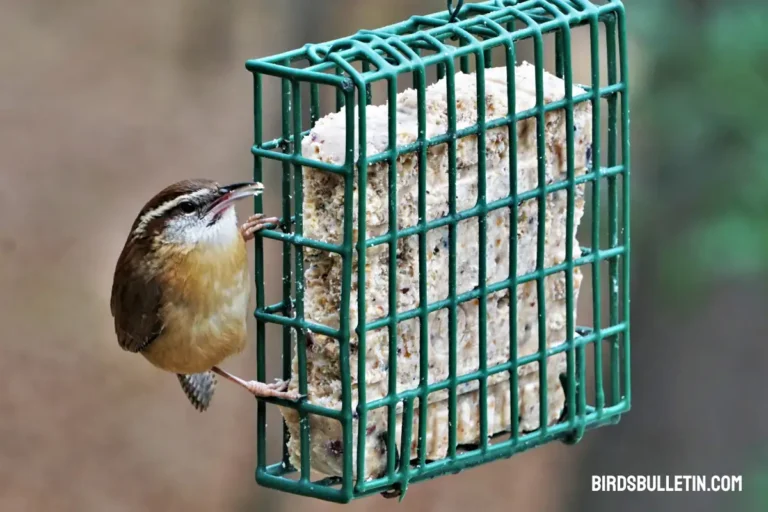What Do Greater Roadrunners Eat?
The Greatest Roadrunner (Geococcyx californianus) is an iconic bird found across the deserts of the southwestern United States and Mexico. With its distinctive appearance and serpentine hunting style, the Greater Roadrunner has long been a fascinating species.
An opportunistic omnivore, the Greater Roadrunner eats a wide range of prey across its arid habitat. Across its range, the Greater Roadrunner hunts prey including insects, arachnids, reptiles, amphibians, small mammals, and more.
This article will provide an overview of the key components of the Greater Roadrunner’s diet across seasons and life stages. We’ll explore what its favorite foods are, how it gathers meals, how its diet changes in winter, and what baby roadrunners eat to fuel their growth.
Favorite Foods
The omnivorous Roadrunner tracks down prey including spiders, scorpions, insects, lizards, snakes, and small mammals. Some favorite items include:
| Prey | Details |
|---|---|
| Beetles | Darkling beetles, June bugs, potato beetles |
| Grasshoppers | Numerous grasshopper species |
| Lizards | Fence lizards, side-blotched lizards, horned lizards |
| Snakes | Garter snakes, blind snakes, racers |
| Mice | Deer mice, cactus mice species |
| Spiders | Tarantulas, widow spiders, scorpions |
Want to learn more about birds’ food and diet
How Often Do Greater Roadrunners Eat?
Roadrunners feed almost continuously while active during the day. They have a rapid metabolism powering their active lifestyle and do not cache or store food for later.

Roadrunners spend nearly all their waking hours either hunting and chasing down prey or standing watchfully along the landscape ready to launch their next hunt.
What Time of Day Do Greater Roadrunners Feed?
As diurnal creatures, Greater Roadrunners do most of their feeding during the daytime hours from dawn to dusk. They usually roost in bushes or low trees overnight to conserve energy.
Their daily activity cycles closely match times when their preferred reptile and insect prey are also active and therefore vulnerable.
How Roadrunners Gather Food?
Roadrunners employ an opportunistic foraging strategy suited to the desert. They walk or run along the ground using their strong legs, surveying for prey movement while also digging into leaf litter and investigating crevices.
Their laterally flexible necks allow them to snap up unsuspecting prey from tricky angles on the ground and in low vegetation. Small mammal prey are often pursued on rapid foot chases over land.
Winter Diet and Foraging
While Greater Roadrunner metabolism slows in winter months, they continue actively foraging year-round. Smaller prey becomes scarcer in winter, so roadrunners depend more heavily on reptiles like lizards and snakes that maintain some activity.
Small mammals like mice, rats, and shrews also become more important food sources for fat and protein during cold periods. Roadrunners have been observed excavating the burrows and dens of hibernating rodents, opportunistically consuming multiple individuals.
Baby Roadrunner Diet
After hatching, nestling Roadrunners grow rapidly and have demanding dietary requirements. For the first week, parents supply a diet of caterpillars, beetles, and grasshoppers – easy-to-digest insects.
As chicks grow, a higher proportion of vertebrate prey is delivered – especially lizards, snakes, and small birds. These provide more nutrients for fast-developing chicks. Parents make frequent trips to the nest with food to satisfy the brood’s needs.
Frequently Asked Questions
01. What do roadrunners drink?
Roadrunners get moisture from prey but also drink rainwater caught in desert rock pools and other surface water after storms.
02. Do roadrunners eat rattlesnakes?
Yes, they can prey on small rattlesnakes though rely on speed and evasive skill to avoid vipers’ venomous bites during these predatory attacks.
03. How do roadrunners find so much food in the desert?
Roadrunners are highly adapted to desert conditions. Their ability to cover significant ground each day while hunting across large home ranges allows them to scour vast areas for patchy food availability.
04. Are roadrunners carnivores or omnivores?
As opportunistic and adaptable feeders, Roadrunners are omnivores – feeding on diverse plant and animal food sources. But small vertebrates make up the bulk of their diet.
Final Thought
From crunching through horned lizard hides to swiftly dispatching mice, the Greater Roadrunner employs an impressively adaptable predatory repertoire to exploit food sources across demanding desert environments year-round.
Its varied diet offers key insight into how this lanky ground-dweller continues thriving as an iconic part of the Southwest’s arid ecosystems.
References
- Audubon Society (2022). Guide to North American Birds – Greater Roadrunner. https://www.audubon.org/field-guide/bird/greater-roadrunner
- Kaufman, K. (2022). Kaufman Field Guide to Birds of North America. Houghton Mifflin Harcourt.
- Birds of the World (2022). Greater Roadrunner. https://birdsoftheworld.org/bow/species/greroa/cur/introduction







